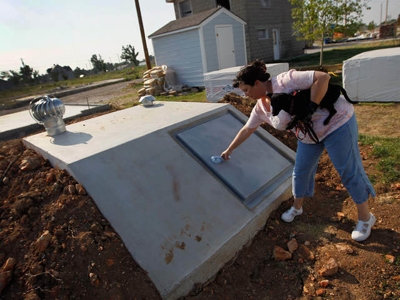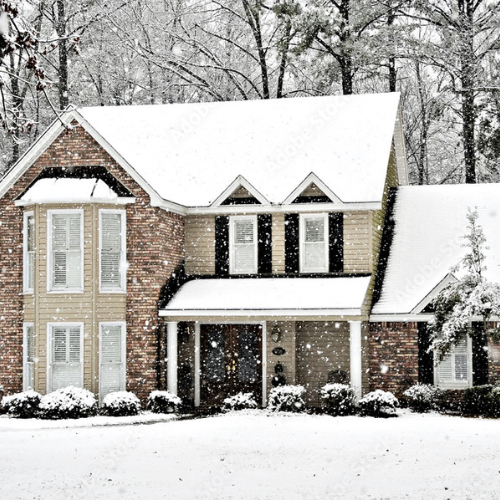
THINK ABOUT THE BIGGEST RISKS BEFORE YOU BUY OR BUILD.
Certain areas of the United States are more prone to serious storms like tornadoes and hurricanes. In places like the Midwest and Great Plains, tornadoes can wreak serious havoc with high winds that destroy above-ground structures and send debris flying. In coastal environments, particularly along the Gulf of Mexico and the Atlantic, hurricanes can bring ferocious winds as well as deadly floodwaters. To find out whether a storm shelter is a good investment for you and what kind you should build or purchase, first think about your location and what type of weather risks you're more likely to face. You may need a specific style of shelter based on your unique risks. (Regardless of where you live, it's always a smart idea to have an emergency preparedness kit on-hand in case disaster strikes.)
CONSIDER WHETHER YOUR SHELTER SHOULD BE ABOVE OR BELOW GROUND.
Based on your particular risk, determine whether the shelter you choose should be installed underground or above ground as a freestanding building. Underground storm shelters will protect you from high winds and dangerous projectiles but can also be more susceptible to floodwaters. These shelters can be installed directly into the ground nearby the primary building, or a "safe room" can be installed in your basement where you can escape until the danger has passed. Above-ground storm shelters are slightly more versatile since you can take yours with you if you move, but they may require extra measures to secure them against high winds. As with below ground shelters, install above-ground shelters close enough to your property to allow for fast, safe access. Licensed contractors who specialize in building above-ground tornado shelters can advise you on the best design for your family. Make sure that any aboveground storm shelter you construct references the standards issued by Federal Emergency Management Agency (FEMA) or is otherwise built in accordance with proper safety standards.
DECIDE WHETHER TO BUY A SHELTER OR BUILD YOUR OWN.
If you decide to build your own storm shelter or cellar, use the guidance for community and residential safe rooms released by FEMA to inform your design. Building your own shelter can be more cost-effective, but it's essential that you understand and follow proper safety rules and regulations so your shelter will adequately protect you during a storm. Pre-made storm shelters are also available, and they're usually pre-certified as safe and up to standard by the manufacturer. The cost to purchase a pre-fabricated shelter might be higher upfront than building your own, but some advantages include easy installation and the confidence of knowing your shelter has been designed and built properly. A proper shelter should help keep you physically safe in the event of a severe storm, but your property itself may not be so lucky. If you experience property damage due to a storm, call the experts at ServiceMaster Restore. Our experienced teams are available 24/7/365 to help guide you through some of life's most challenging times. Contact the experts today to learn more about our flood, fire and other disaster restoration services.



